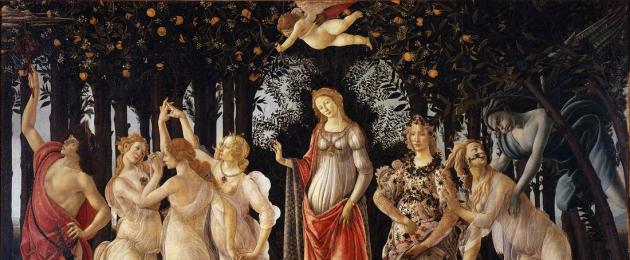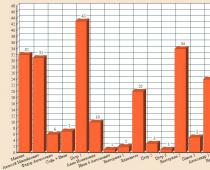The sources of inspiration for the creators of the Middle Ages and the Renaissance often became the unattainable Beautiful Ladies, whose platonic love and worship gave birth to masterpieces of world art. Florentine Simonetta Vespucci became for the greatest Renaissance artist Sandro Botticelli the same deity as Beatrice for Dante or Laura for Petrarch. She did not notice the modest artist and did not suspect that she was the ideal of beauty for him.
The girl never found out, thanks to whom her image remained for centuries, she passed away at the age of 23.
(Total 16 photos)

Sandro Botticelli. self-portrait
Little is known about her. Simonetta was married to Marco Vespucci, who was related to the famous Florentine navigator Amerigo Vespucci. Simonetta's husband was a friend of Giuliano Medici, the co-ruler of Florence, so after the wedding, the young people moved to this city. But the marriage of Simonetta and Marco was not a happy one.

Filippino Lippi. Portrait of S. Botticelli
After they moved to Florence, the young beauty could not be left without attention, many noble men of the city sought her favor, among her admirers was the Florentine ruler Lorenzo Medici. But her heart was given to his younger brother Giuliano. He was admired by the entire female population of the city, from noble ladies to townspeople - he was handsome, stately, strong and dexterous.

Sandro Botticelli. "Portrait of a young woman" ("Portrait of Simonetta Vespucci"), 1475-80

Agnolo Bronzino. Portrait of Giuliano Medici

Sandro Botticelli. Simonetta Vespucci (presumably), 1475

This work by Piero di Cosimo is believed to depict Simonetta Vespucci as Cleopatra decades after her death.

Sandro Botticelli. Portrait of Giuliano de' Medici, 1476
Florence loved Giuliano de' Medici. He was called the Prince of Youth. He showed no interest in state affairs, but willingly took part in tournaments and balls. Simonetta was considered the first beauty of Florence, they called her "Incomparable", poets dedicated poems to her, artists painted her portraits.

Sandro Botticelli. Portrait of Giuliano de' Medici, 1478

Sandro Botticelli. "Spring" (Primavera), 1482
Some researchers claim that Simonetta became Giuliano's lover, some are sure that their love remained platonic. There is no doubt that on January 28, 1475, Giuliano took part in the tournament and, after his victory, proclaimed the lady of his heart - Simonetta - the queen of the tournament. Botticelli participated in the design of this action, depicting Giuliano Simonetta on a personal banner in the form of Minerva in a white dress, with the head of the Gorgon Medusa in his hands. Unfortunately, this standard has not been preserved.

Sandro Botticelli. "Birth of Venus", 1485

Sandro Botticelli. "Madonna and Child", 1470

Sandro Botticelli. "Madonna with a book", 1483

Sandro Botticelli. "Madonna with a pomegranate", 1487
The beautiful Simonetta died at the age of 23 from consumption (according to another version - from poison). All of Florence mourned her death - they mourned the departure of the Beautiful Lady and the completion of the ideal love of Giuliano and Simonetta. Two years after the death of his beloved, on the same day - April 26 - he died at the hands of the conspirators and Giuliano Medici. The death of young lovers seemed mystical to the Florentines, this story was remembered for a long time.

Andrea Verrocchio. Female portrait. Presumably, this is a portrait of Simonetta Vespucci
Most of the portraits of Simonetta appeared after her death. Her early departure was mourned by Sandro Botticelli, who painted Venus and Spring from her. Botticelli completed his most famous work, The Birth of Venus, 9 years after Simonetta's death. Art critics are still arguing about exactly on which canvases the artist captured Simonetta Vespucci, and only her. Some suggest that from the moment they met, the artist depicted Simonetta in the image of Madonna or Venus for 15 years on all canvases.

Simonetta Vespucci
With the death of Simonetta Vespucci and Giuliano Medici in Florence, an entire era, which is called the "Golden Age", ended, and the decline of the Florentine Renaissance began.

Sandro Botticelli. "Venus and Mars", 1483
- In contact with 0
- Google Plus 0
- OK 0
- Facebook 0








